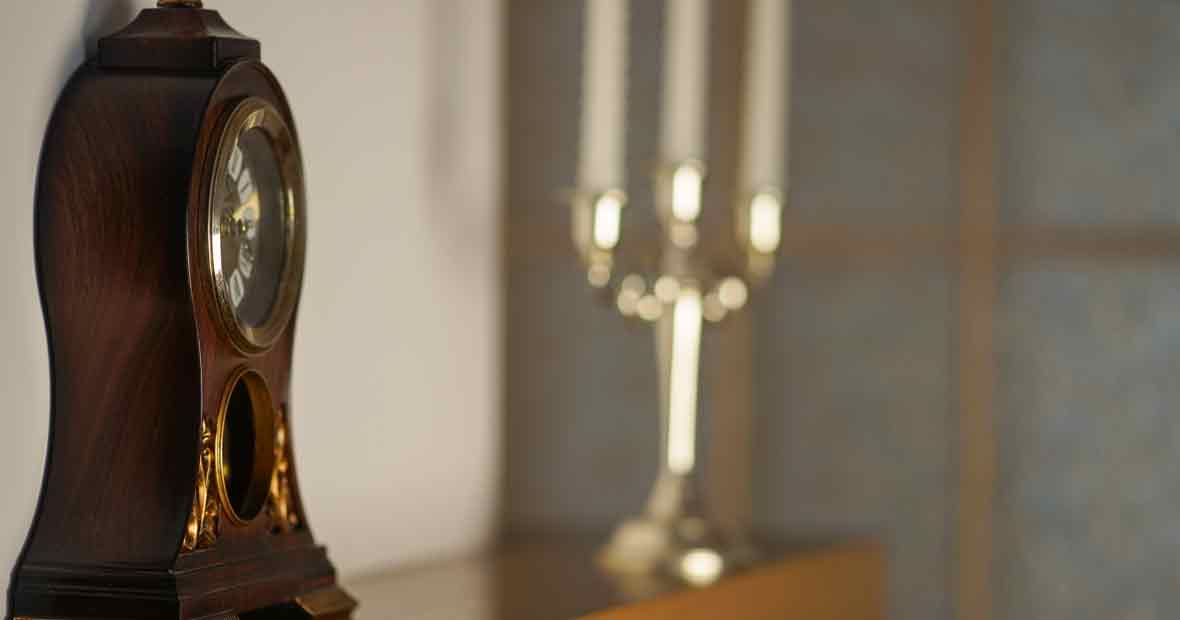
Antique mantel clocks are much more than mere timekeepers. Their profound historical significance, blending of function and art, and transformation from utility to decorative masterpiece emphasize their unique place in the annals of decorative arts.
The Golden Era: Key Periods in Mantel Clock Design
Antique mantel clock designs have evolved through key historical periods, with each era leaving its unique imprint on the craft. Click on this link for more details.
The Renaissance: Dawn of Craftsmanship
Emerging during the Renaissance, when a surge of arts and sciences rejuvenated Europe, mantel clocks began to reflect the period's sophisticated aesthetics. Artisans incorporated mythological motifs, geometric patterns, and scenes from daily life, representing the rebirth of knowledge and creativity.
The Baroque and Rococo Revival
The Baroque period introduced opulence and grandeur, with curves, ornaments, and dramatic flair. As the Rococo period emerged, designs became lighter, more playful, with a focus on asymmetry and delicate details, exemplifying a distinct move from the more formal Baroque styles.
The Victorian Era: Ornate and Opulent
The Victorian period celebrated extravagance, and mantel clocks of this era are characterized by intricate carvings, enameling, and the use of precious materials. These clocks became symbols of prestige, showcasing the owner's wealth and taste.
Notable Craftsmen and Clockmakers
Behind every ornate clock is the brilliance of its maker.
The Luminary: Abraham-Louis Breguet
Breguet, a Swiss horologist, elevated clock-making with his impeccable designs and groundbreaking mechanisms. He introduced the tourbillon, an innovation that countered gravitational errors in timekeeping, marking a significant step in horological advancement.
Jean-Antoine Lépine's Innovations
Lépine’s designs were revolutionary. He streamlined clock mechanisms, making them slimmer, which allowed for sleeker, more modern clock aesthetics. His legacy is not only in his clocks but also in the Lépine caliber, a design still used today.
The Contributions of Gustav Becker
Becker, a German clockmaker, was renowned for his precision. Winning numerous awards, his clocks became synonymous with quality and craftsmanship. His creations remain highly sought after by collectors.
Distinct Design Elements: Breaking Down the Artistry
Antique mantel clocks are a symphony of artistry, with every detail contributing to the masterpiece.
Hand-Painted Clock Faces
Artisans meticulously painted scenes, numbers, and motifs on clock faces, making each piece a unique work of art. This personalized touch differentiated clocks, making them stand out.
Intricate Inlays and Marquetry
Inlays and marquetry involve embedding different materials into the wooden surfaces of clocks to create patterns or scenes. This delicate work requires precision and is a testament to the artisan's skill.
Use of Precious Metals and Stones
Gold, silver, and gemstones were often incorporated into designs, adding a touch of luxury and opulence. These materials not only elevated the clock's appearance but also its value.
Materials and Techniques: Crafting a Timepiece
The choice of materials and techniques plays a pivotal role in defining a clock's aesthetics.
Wood: From Oak to Exquisite Mahogany
Different types of woods, from sturdy oak to rich mahogany, have been used through the centuries, each lending its unique texture and hue to the final product.
Metalwork: Bronze, Brass, and Silver Gilding
Metals added strength and luster to clocks. Gilded bronze or ormolu was a popular choice, especially in France, giving clocks a radiant golden sheen.
Gems and Enamel: Adding the Finishing Touches
Gems provided the sparkle, while enamel offered a chance to add colors and intricate designs, enhancing the clock's overall visual appeal.
The Marriage of Mechanics and Aesthetics
The inside of a mantel clock is as fascinating as its exterior.
Evolution of Internal Clockwork Mechanisms
Over time, clock mechanisms evolved, becoming more accurate and compact. This allowed for varied designs, from slim, minimalist pieces to grand, ornate structures.
Chimes and Sound: The Auditory Beauty
The sound of a clock, whether it's the ticking or melodious chimes, adds another layer of beauty. The development of musical chimes turned clocks into both visual and auditory delights.
Adorning the Movement: External Craftsmanship
The movement, or the clock’s mechanism, was often hidden behind ornate panels or decorative elements, ensuring the marriage of functionality and design.
Cultural Influences: Global Variations in Design
Mantel clock designs reflect the cultural nuances of their origins.
French Elegance: Parisian Mantel Clocks
French clocks are the epitome of elegance, with their ormolu finishes and romantic themes, reflecting the nation's rich art and history.
English Tradition: The British Take on Timekeeping
English mantel clocks are a blend of tradition and innovation. Often made of mahogany or oak, they represent the British penchant for craftsmanship and detail.
Exotic Influences: The East Meets West
As trade routes expanded, Eastern motifs began to influence Western clock designs. Dragons, pagodas, and oriental landscapes found their way into European mantel clocks, creating a fusion of styles.
Preservation and Restoration: Keeping the Legacy Alive
To ensure these timepieces endure, preservation and restoration are crucial.
Challenges in Restoring Antique Clocks
Restoration is a delicate process. From sourcing authentic materials to replicating lost techniques, restorers face a myriad of challenges in reviving these masterpieces.
Materials and Methods for Preservation
Using the right materials, from specific wood polishes to particular metal finishes, is vital. Preservation methods, like controlled environments, protect clocks from external damages.
The Value of Authentic Restoration
Authentic restoration ensures that the essence of the original design remains intact. It respects the creator's vision and retains the clock's historical and sentimental value.
The Enduring Beauty of Antique Mantel Clocks
Antique mantel clocks are timeless treasures.
Celebrating Craftsmanship Across Centuries
These clocks are a testament to human ingenuity and artistry, showcasing the best of design and mechanics from bygone eras.
The Sentimental Value of Timepieces
Beyond their artistic merit, these clocks often carry stories, having been passed down through generations, making them priceless heirlooms.
The Continual Allure for Collectors and Enthusiasts
The world of antique mantel clocks is enchanting. Their blend of history, art, and mechanics makes them an enduring passion for collectors and enthusiasts worldwide, ensuring their allure will never fade.